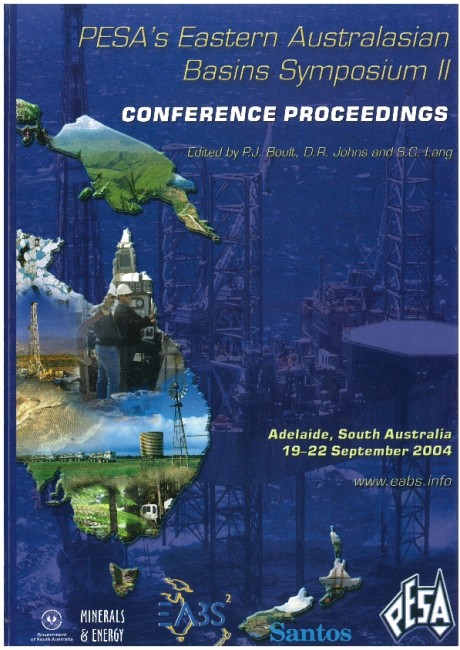Publication Name: PESA's Eastern Australasian Basin Symposium II
Authors: J.M. Totterdell and B.E. Bradshaw
Date Published: December 2004
Number of Pages: 38
Reference Type: Book Section
Abstract:
The Jurassic-Cretaceous, largely offshore, Bight Basin is situated along the western and central parts of the southern Australian continental margin, extending from the southern tip of Western Australia, to just south of Kangaroo Island. The thickest depocentre in the basin is the Ceduna Sub-basin, adjoined to the east by the Duntroon Sub-basin. The deepwater Recherche Sub-basin adjoins the Ceduna Sub-basin to the south and extends west along the southern margin. Perched half-graben systems of the Denmark, Bremer and Eyre sub-basins lie to the north of the Recherche Sub-basin.The Bight Basin evolved through repeated episodes of extension and thermal subsidence leading up to, and
following, the commencement of sea-floor spreading between Australia and Antarctica. The basin was initiated during a period of Middle-Late Jurassic to Early Cretaceous upper crustal extension. A northwest-southeast to north-south extension direction, superimposed onE-Wand NW-SE-oriented basement structures, resulted in oblique to strongly oblique extension and the formation of en-echelon half graben in the Denmark, Bremer, Eyre, inner Recherche, eastern Ceduna and Duntroon sub-basins. Post-rift thermal subsidence was followed by a phase of accelerated subsidence, which commenced in the Late Albian and continued until continental break-up in the latest Santonian. During this phase of enhanced subsidence, the dominant structural feature was a system of gravity-driven, detached extensional and contractional structures, which developed in the Ceduna Sub-basin during the Cenomanian as a result of deltaic progradation. Evidence for upper crustal extension during this basin phase is limited to Turonian-Santonian extensional faulting, and the reactivation and propagation of Cenomanian growth faults. The commencement of sea-floor spreading at -83 Ma was followed by a further period of thermal subsidence and establishment of a passive margin.


